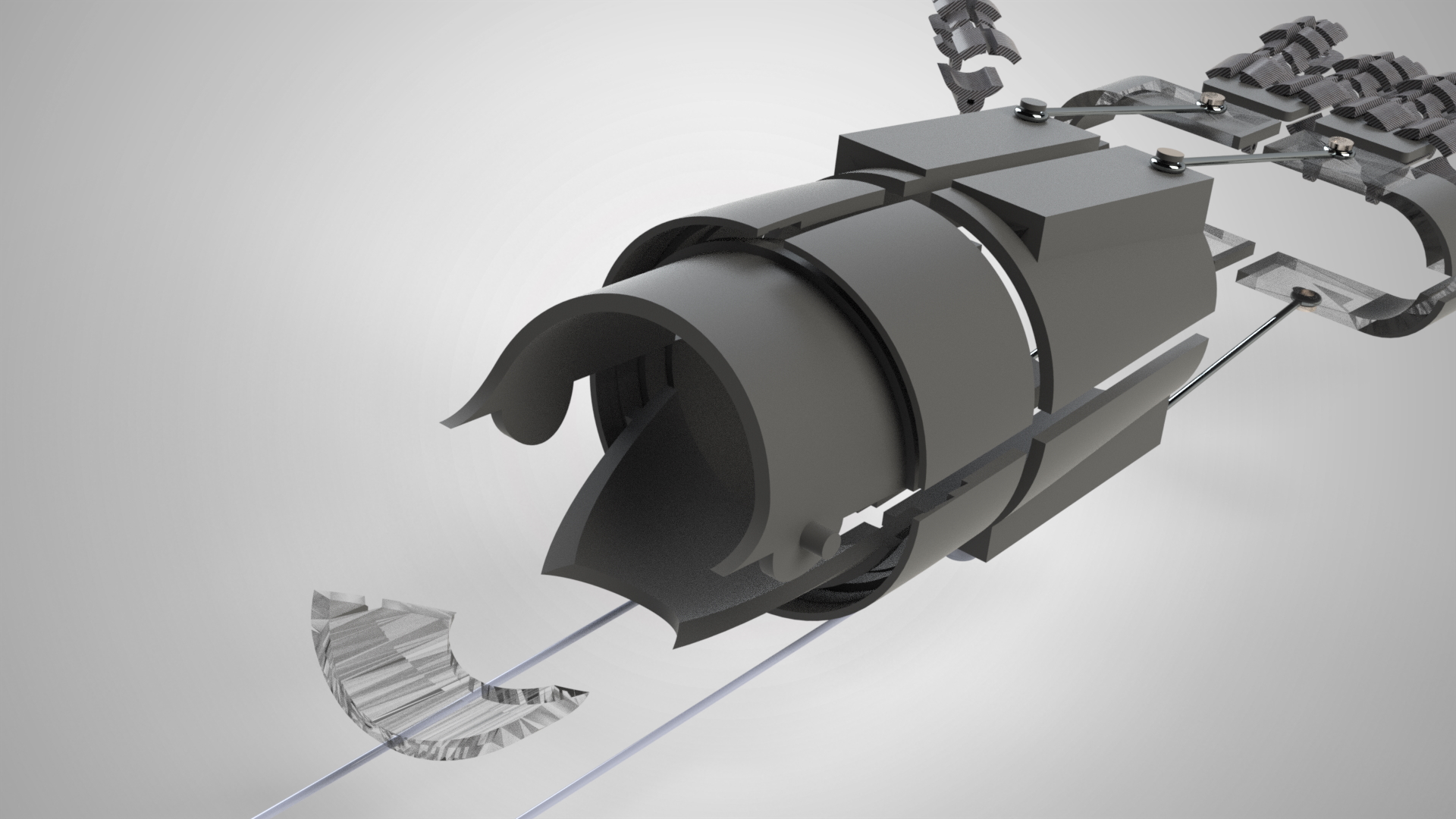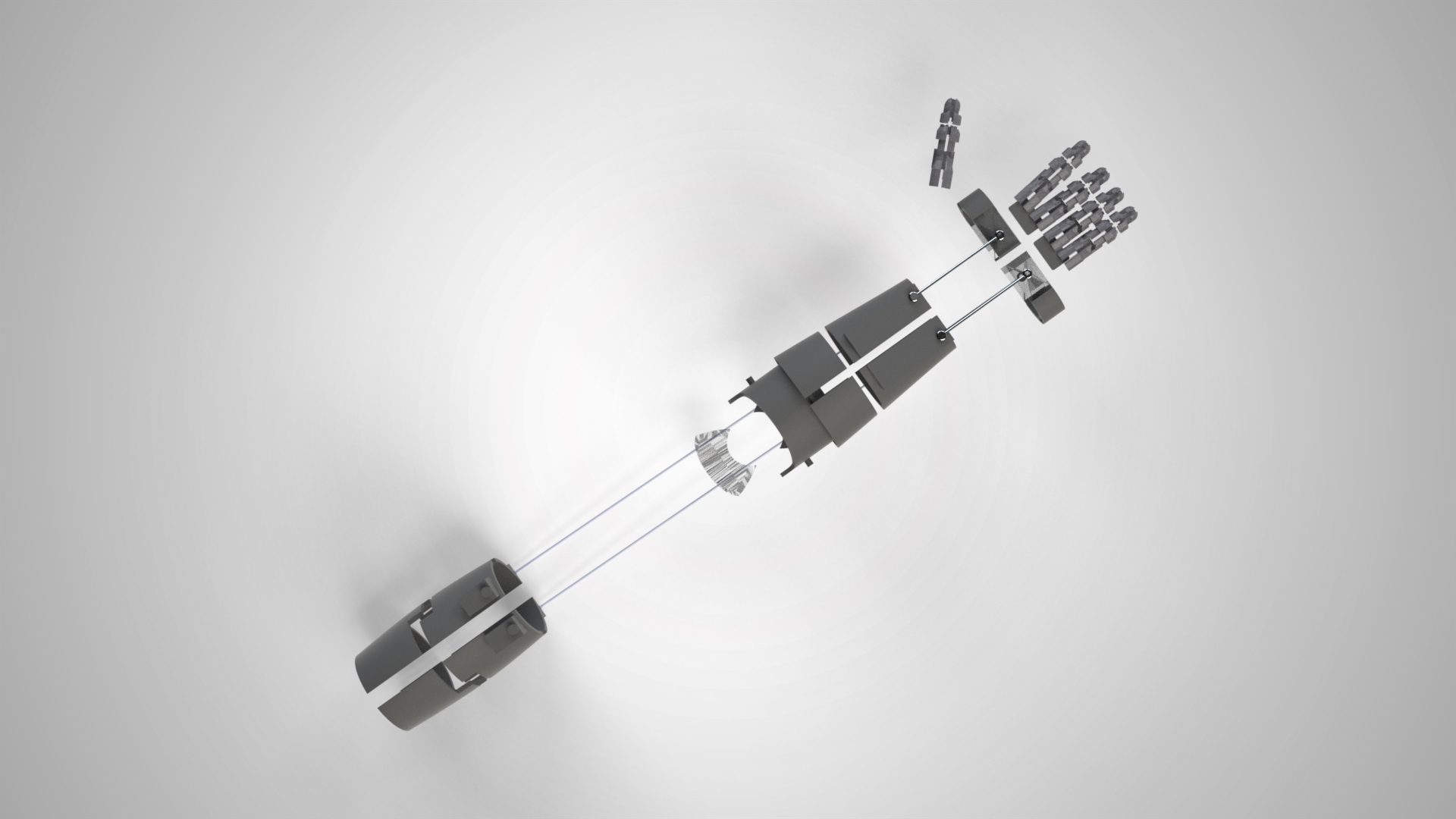CyberMonkE - IBM Design Challenge
Introduction
The first-ever uOttawa Designathon happened in Feb. 2021. It was a 3-day event where competitors from all over the world created 3D design solutions to complex problems. After seeing large hackathons year after year, it was an awesome initiative for engineers to compete in something that wasn’t programming. And especially great for aspiring Mechanical Engineers as Computer-Aided 3D Design is a major component of our profession.
The event also featured workshops, presentations, and a list of social community activities. After two sleepless nights, competitors presented their solutions on the third day and the top 3 teams were picked for each category. My team, CyberMonkE, placed 2nd for the IBM Design Challenge.

Design Criteria
The IBM Design Challenge was to design an exoskeleton for a human arm, that met the following specifications:
- Lightweight
- Enhanced strength to superhuman levels
- Easy to clean
- Fits all arm sizes
- Accessible to users with physical disabilities


Solution
Our solution used Nylon Fibers twisted in coils. When heated, the coils retracted, behaving similarly to muscle fibers. We decided to go this route instead of the usual pneumatics or hydraulics to allow for a large strength boost to the user while keeping the apparatus lightweight. The fibers are able to exert 2000 J/kg of specific work, which is 50x more than natural muscles. Electric current is supplied to the fibers which are held in tension and connecting the 3 major parts of the design. The electrical current is used to heat the fibers - for this project, it was assumed that the team at IBM would responsible for handling the control systems that supplied the current.
The whole design is broken up into three major components: the hand, the forearm, and the bicep. Each component is separated and placed are held together using a flexible composite mesh. The mesh also serves to be flexible enough that users with various different arm sizes can easily equip the CyberLimb and it also acts as an insulator to prevent heat from reaching the users’ skin from the fibers being heated. Each part is further connected with the nylon cables, for a transfer of forces from the bicep to the tip of each finger. The separate parts also allow for easy manufacturing of the product and checks of the criteria of it being easy to clean. Each part is also broken down further into 4 smaller parts that are all connected via an adjustable strap. This allows for users with any weight arm to be able to equip CyberLimb and adjust the straps to fit their size.
The fingers on the hand are a minor separate part on their own and have their movements interconnected (apart from the thumb). This allows a user with a disability in some of their fingers to still be able to use CyberLimb at its full potential.
There are no motors or linear actuators used in this design due to the special nature of the nylon fibers, which makes the design extremely lightweight and compact. A nylon fiber coil is present at both sides of the bicep, forearm, and each finger.
Conclusion
Overall the CyberLimb provided a unique solution to the human arm exoskeleton concept, using nylon fibers very unique property when coiled and heated. One major feasibility concern with this solution was the amount of power required to heat each of the fibers to achieve the level of strength considered “superhuman”. However, mechanically, the solution was complete, efficient, and simple.
Placing 2nd at this Designathon got us an invite to the international Designathon where the top teams from each school compete against each other, and it will be exciting to see how we fair up.